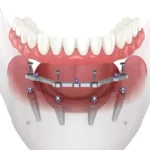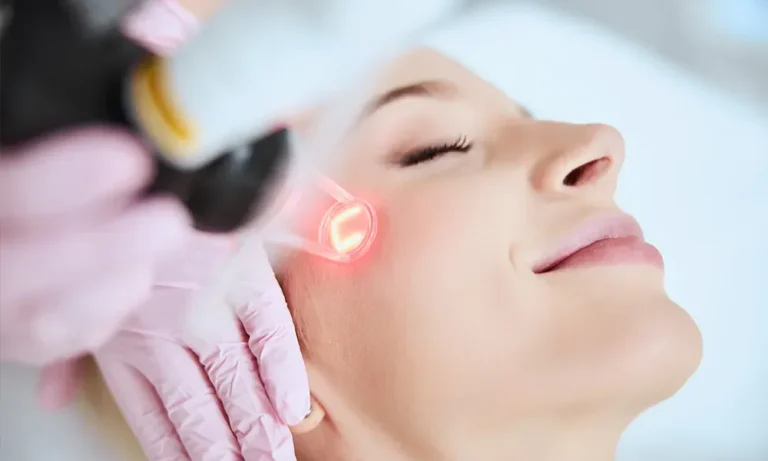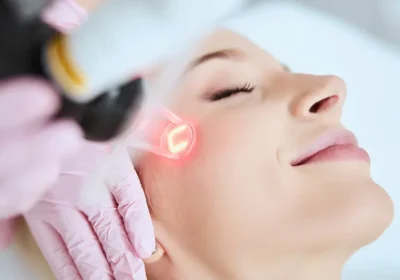
What Are Dermal Fillers and How Do They Work to Improve the Appearance of the Skin?
As we age, our skin undergoes many changes, such as the loss of volume, the development of wrinkles, and a decrease in elasticity. This natural process can sometimes leave us looking older or more tired than we feel. Dermal fillers have become a popular cosmetic solution for reversing these signs of aging, offering a non-surgical way to restore youthful, smooth, and plump skin.
In this article, we’ll take a deep dive into dermal fillers, how they work, and how they can enhance the appearance of your skin. Whether you’re considering them for the first time or just curious about how they can help, this guide will provide you with everything you need to know.
Introduction to Dermal Fillers
Dermal fillers are non-surgical cosmetic treatments that help to restore volume, smooth out wrinkles, and rejuvenate the skin. They are typically used to treat areas that show signs of aging or to enhance facial features like the lips and cheeks. The results of dermal fillers are almost immediate, which is one of the reasons they are so popular.
Unlike Botox, which temporarily paralyzes muscles to reduce dynamic wrinkles, dermal fillers work by adding volume and plumpness to the skin. This makes them an excellent option for individuals looking to combat static wrinkles or loss of facial volume due to aging.
What Are Dermal Fillers?
Dermal fillers are injectable substances designed to be inserted beneath the skin to restore lost volume, smooth wrinkles, and improve overall skin texture. They can be made from a variety of materials, but most commonly, they are made of hyaluronic acid, calcium hydroxylapatite, poly-L-lactic acid, or polymethylmethacrylate. Each type of filler has unique properties that make it suitable for different treatments.
Hyaluronic Acid Fillers
Hyaluronic acid is a naturally occurring substance in the skin that helps maintain hydration and volume. Fillers made from hyaluronic acid (like Juvederm or Restylane) are the most common and widely used. They are known for their ability to add plumpness and hydration, offering a natural, smooth finish.
Calcium Hydroxylapatite Fillers
This type of filler (such as Radiesse) is made from calcium-based microspheres suspended in a gel. It is often used for deeper wrinkles and to restore volume to the cheeks, jawline, and other facial structures. It stimulates the production of collagen, improving skin firmness over time.
Poly-L-Lactic Acid Fillers
Sculptra is an example of a poly-L-lactic acid filler. This type works by stimulating collagen production in the skin over time, which helps to gradually restore volume and smoothness. Poly-L-lactic acid fillers are typically used for larger volume loss and can provide longer-lasting results.

Polymethylmethacrylate (PMMA) Fillers
PMMA fillers (like Bellafill) consist of tiny beads suspended in a gel. These are more permanent and are used for deeper lines and wrinkles. PMMA stimulates collagen production and offers long-lasting effects.
How Do Dermal Fillers Work?
Dermal fillers work by replenishing lost volume and stimulating collagen production in the skin. As we age, our skin loses collagen, elastin, and fat, leading to wrinkles, sagging, and hollow areas on the face. Fillers are injected into the skin, where they fill in these hollow areas, smooth out wrinkles, and restore the skin’s youthful fullness.
For example:
- In areas like the cheeks or under the eyes, dermal fillers can restore lost volume, making the face appear fuller and more youthful.
- In the lips, they can enhance volume and shape, giving a more defined and plump appearance.
- In nasolabial folds (the lines running from the nose to the mouth), fillers smooth out these deep creases for a more youthful look.
The injected filler helps to physically plump the skin, while certain types of fillers, such as poly-L-lactic acid, stimulate collagen production over time, improving skin structure and elasticity.
Types of Dermal Fillers
There are several different types of dermal fillers, and each is designed for specific purposes. Some fillers are better for fine lines, while others are ideal for volume restoration or deeper wrinkles.
1. Hyaluronic Acid Fillers
These are the most commonly used dermal fillers. Hyaluronic acid draws moisture into the skin, helping to hydrate and plump the skin. This type of filler is versatile and can be used for wrinkles, lip enhancement, and under-eye bags.
2. Calcium Hydroxylapatite Fillers
These fillers are thicker and are used to treat deeper wrinkles and to enhance volume in areas like the cheeks and jawline. They can also help in collagen production.
3. Poly-L-Lactic Acid Fillers
These fillers stimulate the body’s collagen production over time, gradually restoring volume and smoothing out wrinkles. They are ideal for areas with significant volume loss.
4. PMMA Fillers
These are a more permanent solution for deep wrinkles. They are typically used for the deeper folds or scars and help stimulate collagen production.
What Areas Can Dermal Fillers Treat?
Dermal fillers can treat a variety of facial areas, addressing a wide range of concerns. Some of the most common areas treated with dermal fillers include:
- Cheeks: Restoring lost volume to the cheeks can help create a youthful, lifted appearance and balance the face.
- Lips: Fillers can enhance the size and shape of the lips, giving them a fuller, more defined look.
- Under-Eye Area: Dermal fillers can reduce the appearance of hollow eyes and dark circles by adding volume under the eyes.
- Nasolabial Folds: These are the lines that run from the nose to the corners of the mouth. Fillers can soften these lines for a smoother, more youthful appearance.
- Jawline and Chin: Fillers can be used to define the jawline and chin, creating a more structured facial profile.
How Long Do Dermal Fillers Last?
The longevity of dermal fillers depends on the type of filler used, the area treated, and individual factors like metabolism and lifestyle.
- Hyaluronic acid fillers: Typically last between 6 months to 1 year.
- Calcium hydroxylapatite fillers: Can last around 12 to 18 months.
- Poly-L-lactic acid fillers: Can last up to 2 years or more, with gradual improvements over time.
- PMMA fillers: Provide long-lasting results and can last several years.
While dermal fillers are not permanent, their effects can last a significant amount of time, and many people choose to have maintenance treatments every few months to a year.
Benefits of Using Dermal Fillers
The benefits of dermal fillers go beyond mere aesthetics:
- Quick Results: Most people see results immediately.
- Minimal Downtime: Unlike surgical procedures, fillers often require little recovery time.
- Natural-Looking Results: When done correctly, fillers can provide subtle, natural-looking enhancements.
- Enhancing Facial Contours : Dermal fillers can be strategically injected to sculpt and define facial contours, such as the jawline, chin, and lips. Whether you desire more defined cheekbones or fuller lips fillers offer a customizable solution to enhance your natural features.
Are Dermal Fillers Safe?
Yes, dermal fillers are generally safe when performed by a qualified and experienced practitioner. The materials used in fillers, especially hyaluronic acid, are biocompatible, meaning they are well-tolerated by the body. However, like any cosmetic procedure, there are some risks, including:
- Bruising and swelling: These are common side effects and usually resolve within a few days.
- Lumps or uneven results: Rarely, fillers can cause lumps or unevenness, but this can often be corrected with additional treatments.
- Infection: While uncommon, there is a slight risk of infection if the area is not properly cared for after treatment.
Choosing a skilled, certified professional can help minimize these risks and ensure the best outcome.
Aftercare and Maintenance for Dermal Fillers
To get the most out of your dermal filler treatment, it’s important to follow proper aftercare instructions:
- Avoid touching or massaging the treated area for 24 hours.
- Avoid strenuous exercise for at least 24 hours after the procedure.
- Limit sun exposure and use sunscreen to protect the skin from UV damage.
- Stay hydrated to keep your skin looking its best.
Follow-up treatments may be necessary to maintain results, depending on the type of filler used.
Conclusion
Dermal fillers are an effective, non-surgical solution for improving the appearance of the skin. By adding volume, smoothing out wrinkles, and restoring facial contours, they can help achieve a youthful and refreshed appearance. Whether you’re looking to enhance the fullness of your lips, smooth out lines around your mouth, or restore volume to your cheeks, dermal fillers offer a customizable and relatively low-risk option. With proper aftercare and maintenance, you can enjoy natural-looking results that last for months to years.


















